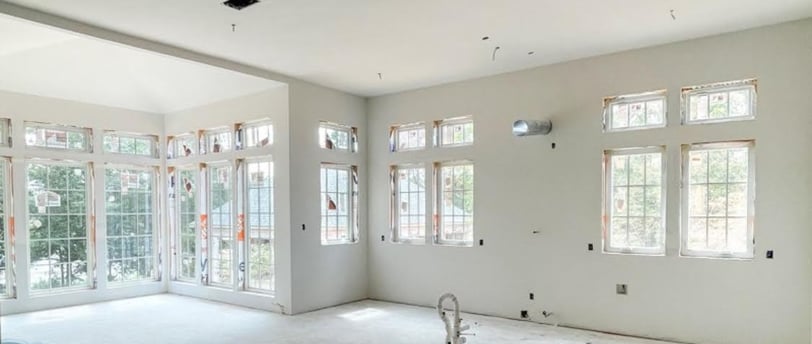Mastering the Art of Fine Finishing: Traditional High-Caliber Veneer Plaster and Drywall Techniques


The Evolution of Plastering Techniques
The art of plastering has a rich history, marked by a continuous evolution of techniques and materials. The earliest forms of plastering can be traced back to ancient civilizations, where mud and clay were predominantly used to create smooth finishes on walls. Over the centuries, as construction methods advanced, so too did the materials employed in plastering. The introduction of lime-based plasters in the Roman era exemplified a significant development, providing greater strength and durability compared to earlier mixtures. These lime plasters allowed for more intricate moldings and textures, showcasing the craftsmanship of the time.
In the 19th century, the emergence of gypsum plaster marked a pivotal moment in plastering techniques. Known for its quicker drying time and ease of application, gypsum plaster revolutionized the industry, giving artisans a reliable option for creating visually appealing surfaces. This era also saw the introduction of veneer plaster, a thin layer of high-caliber material applied over a base, which provided an elegant finish while utilizing less material than traditional methods. This combination of durability and aesthetic appeal positioned veneer plaster as a favored choice in both new constructions and renovations of vintage homes.
The late 20th century brought about the rise of drywall systems, offering a more accessible and cost-effective alternative to traditional plastering. While drywall is preferred for its convenience and speed of application, high-caliber veneer plaster has managed to retain its relevance. The benefits of plastering, including its superior finish, soundproofing capabilities, and versatility in moldability, continue to make it a sought-after choice for specific historical restorations and premium constructions. As the construction industry progresses, the juxtaposition of plaster and drywall exemplifies the diverse strategies employed to achieve quality and aesthetic integrity in building practices.
The Art of Fine Finishing: Techniques and Tips
Achieving a flawless finish with veneer plaster and drywall requires a deep understanding of techniques, tools, and materials. When it comes to the application process, the first step is to ensure that the surface is adequately prepared. This entails cleaning the drywall and repairing any imperfections with a joint compound. A smooth, clean surface provides the ideal foundation for the subsequent layers of plaster. It is pivotal to utilize high-quality tools such as trowels, hawks, and sanding blocks to craft a level finish.
Proper mixing of materials is crucial in this process. The consistency of the veneer plaster should resemble that of creamy peanut butter—this allows for easier application and better adhesion to the drywall. When applying the plaster, specialists typically use a method known as the "three-coat system," which involves applying a base coat, a second coat, and a finishing coat. Each layer should be allowed to set slightly before applying the next, taking care not to let it dry completely, as this can lead to cracking.
Texture plays a significant role in the final finish, whether for interior or exterior applications. Techniques such as stippling or dragging can add visual interest and subtle dimension to the surface. Timing is also essential; applying the finishing touches too early or too late can compromise the appearance. For instance, if the final coat is too dry, it may not allow for the desired texture.
Common challenges, such as bubbles or uneven surfaces, can be addressed through careful sanding and additional coats of compound. Troubleshooting these issues often involves examining the application technique and adjusting the material mixture as needed. By following these recommendations and paying close attention to detail, both DIY enthusiasts and professionals can master the art of fine finishing with veneer plaster and drywall, ensuring a professional result that enhances any space.
Intricate Repair Work in Vintage and Modern Homes
Repair work plays a pivotal role in preserving both the aesthetic appeal and structural integrity of vintage and modern homes. Many older residences feature intricate plasterwork that reflects the craftsmanship of a bygone era. As a result, attention to detail is critical when addressing repairs in such properties. Achieving a seamless integration of repair work with existing structures requires a meticulous approach, often involving a combination of traditional skills and modern materials.
One of the primary challenges in repairing older plasterwork lies in the delicate nature of the material itself. Vintage plaster can be highly fragile and prone to damage from environmental factors such as moisture or settling. This necessitates a thoughtful method when patching and finishing to ensure that the integrity of the home is maintained. One effective technique includes the use of traditional lime plaster, which offers breathability and flexibility, making it ideal for restoration projects. This method allows for the new material to coexist harmoniously with the original plaster without causing further stress to the structure.
In modern homes, drywall has become the standard, yet it too poses unique challenges when it comes to repairs. Cracks and dents can occur due to shifting, and the repair process often involves applying joint compound, sanding, and painting to achieve a smooth finish. An exemplary case study is the restoration of a mid-century home where drywall repairs were executed with precision, blending seamlessly into the original design. Here, specialists used various techniques, including feathering edges and using texture matching, all while ensuring that the new repairs do not disrupt the overall aesthetic.
Ultimately, skilled artisans possess the necessary expertise to navigate the complexities of repair work, whether in vintage or modern structures. Their ability to marry tradition with contemporary methods guarantees that both architectural heritage and modern living are respected and preserved.
Choosing the Right Specialist for Your Project
When embarking on a project that involves veneer plastering or drywall application, selecting the appropriate specialist is crucial for achieving high-quality results. The first step in this process is to consider their experience. A seasoned professional is likely to have honed their skills over numerous projects, which can significantly influence the quality of the work. When evaluating potential contractors, inquire about their years in the industry and the types of projects they have completed. This background will help you assess their level of expertise.
A solid portfolio is another essential factor to consider. Review the contractor's past work to gauge their style and proficiency in veneer plaster techniques. High-caliber veneer plaster demands a specific skill set; therefore, it is important that you find someone who not only has experience but also produces work that aligns with your vision. Requesting before-and-after photos can provide insight into their craftsmanship and attention to detail.
Customer reviews should not be overlooked during the selection process. Inspect online ratings and testimonials to gather feedback from previous clients. A contractor with a track record of positive reviews is likely to uphold a high standard in their work. Pay attention to comments specifically mentioning their skills in plastering and drywall installation, as this can give you confidence in their abilities.
During the consultation phase, prepare a list of questions to assess the contractor's knowledge and suitability. Inquire about their familiarity with high-caliber veneer plaster techniques, the materials they use, and their approach to project management. Engaging in open communication can also give you a sense of their professionalism and willingness to collaborate throughout the project. By following these steps, you will be better equipped to make an informed decision when hiring a specialist for your plastering and drywall needs.
